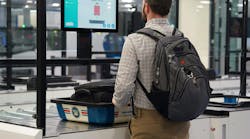Two issues rose to the top of every airport’s agenda recently: active shooters and exit lanes. The limited space available in this column can’t do justice to either subject, so let’s just hit the highlights:
First, the exit lanes: There is considerable documentation, and long experience, that TSA should staff the exit lanes, particularly those that are co-located at the TSA screening checkpoint. Indeed, they are paid for that task, although some airports have voluntarily assumed the responsibility at some portals for a variety of reasons. Now comes TSA with a proposed amendment to the airport ASP that would require the airport to take over the task, as an unfunded mandate, with no approved technology available and very little thought given to the unintended consequences.
TSA originally couched it in terms of a budgetary issue: $88 million in personnel costs saved, although virtually no one believes the “savings” wouldn’t simply be re-programmed to some other tasks on a long list of ineffective measures. But someone at TSA got the bright idea to change tactics: “let’s call manning the exit lane an access control measure; then it belongs to the airport.”
A few points to ponder:
- Language in the original legislation appears to assign the task to TSA, and pay them for it.
- To make such a change requires the normal NPRM regulatory process, which in turn requires a cost/benefit analysis and an analysis of the impact on state and local governments (i.e., airport owners and operators). TSA has simply ignored that requirement.
- As airports pointed out at the recent Aviation Security Summit, the impact on airports is not only far more than the $88 million in personnel costs that TSA has inconveniently failed to mention, but in many instances the cost of reconfiguration and/or shutting down many portals – by one unofficial estimate, well over $200 million, which will considerably multiply as current technology evolves and requires retrofit. (Interestingly, TSA and Congressional staff in attendance seemed surprised by the notion that this budgetary tap dance would actually cost airports geometrically more – but it wasn’t their money…)
- As an access control point, many airports would no longer allow passage of known crew members, armed LEOs, FAMs, and other “favored” categories. They would all require screening – which airports are not authorized to do.
At this point in many of my reportorial narratives, I usually try to find some bright and shiny nugget of wisdom to ward off the atmosphere of doom. Kindly note its absence today…
This brings us to the LAX shooter. He walked from a public street into the public area of a public terminal. That’s no different than if he had a beef with someone at a downtown bodega, an uptown boutique, a suburban mall, an office building, or come to think of it, just stood out on any busy street at lunchtime looking to whack the next guy who walks by wearing an “I ” shirt. The demands began immediately for more armed police at every airport, 100% screening at the front door, and guns for the TSOs – who, may I remind you, are not, and were never intended to be, law enforcement - they screen passengers and bags. Period.
And an honorable task it is. But more guns is simply an invitation for the crazies and the sheriff to re-enact the OK Corral, and you know how well that turned out for pretty much everybody. At the risk of appearing a tad insensitive: we live in a real and cruel and insensitive world, where bad things happen to good people with some regularity. Life itself is risky – watch out for that bus, don’t eat that green stuff growing on the cheese, and if you really think more guns will solve any problem, consider moving into the bedroom closet and eating only the thin-crust pizza that we can slide under the door.


